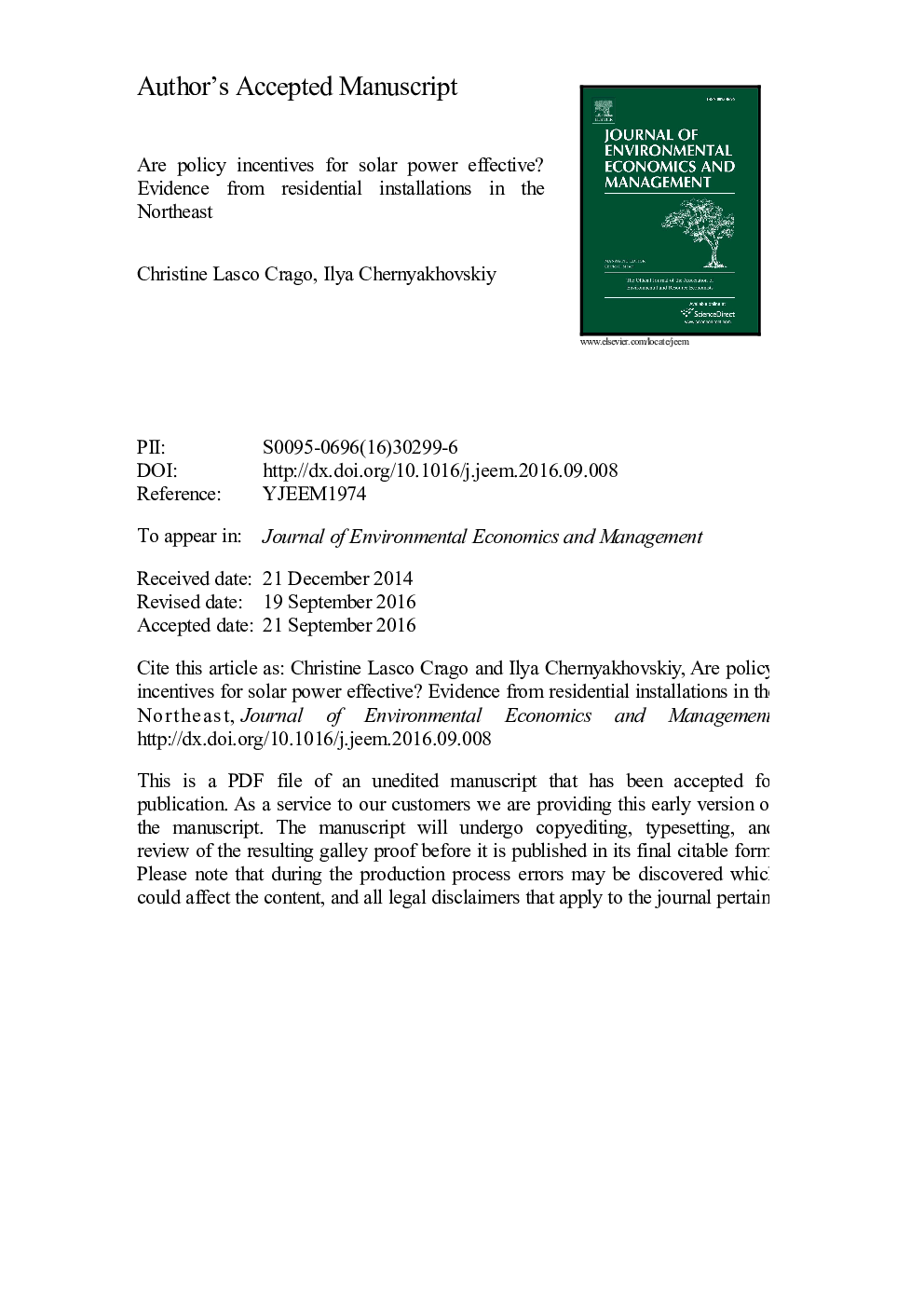| Article ID | Journal | Published Year | Pages | File Type |
|---|---|---|---|---|
| 5100446 | Journal of Environmental Economics and Management | 2017 | 53 Pages |
Abstract
State incentives for solar power have grown significantly in the past several years. This paper examines the effectiveness of policy incentives to increase residential solar photovoltaic (PV) capacity. We use county-level panel data and control for demographic characteristics, solar resources, and pro-environmental preferences. Results show that among financial incentives, rebates have the most impact with an additional $1 per watt rebate increasing annual PV capacity additions by close to 50%. Factors that affect financial returns to solar PV such as electricity price and solar insolation are also found to be significant. Results also point to a significant positive relationship between hybrid vehicle sales and residential PV capacity growth, indicating the importance of pro-environmental preferences as a predictor of solar PV demand. Back of the envelope calculations suggest that the cost of carbon mitigation through rebates is around $184 per ton of CO2.
Related Topics
Social Sciences and Humanities
Economics, Econometrics and Finance
Economics and Econometrics
Authors
Christine Lasco Crago, Ilya Chernyakhovskiy,
